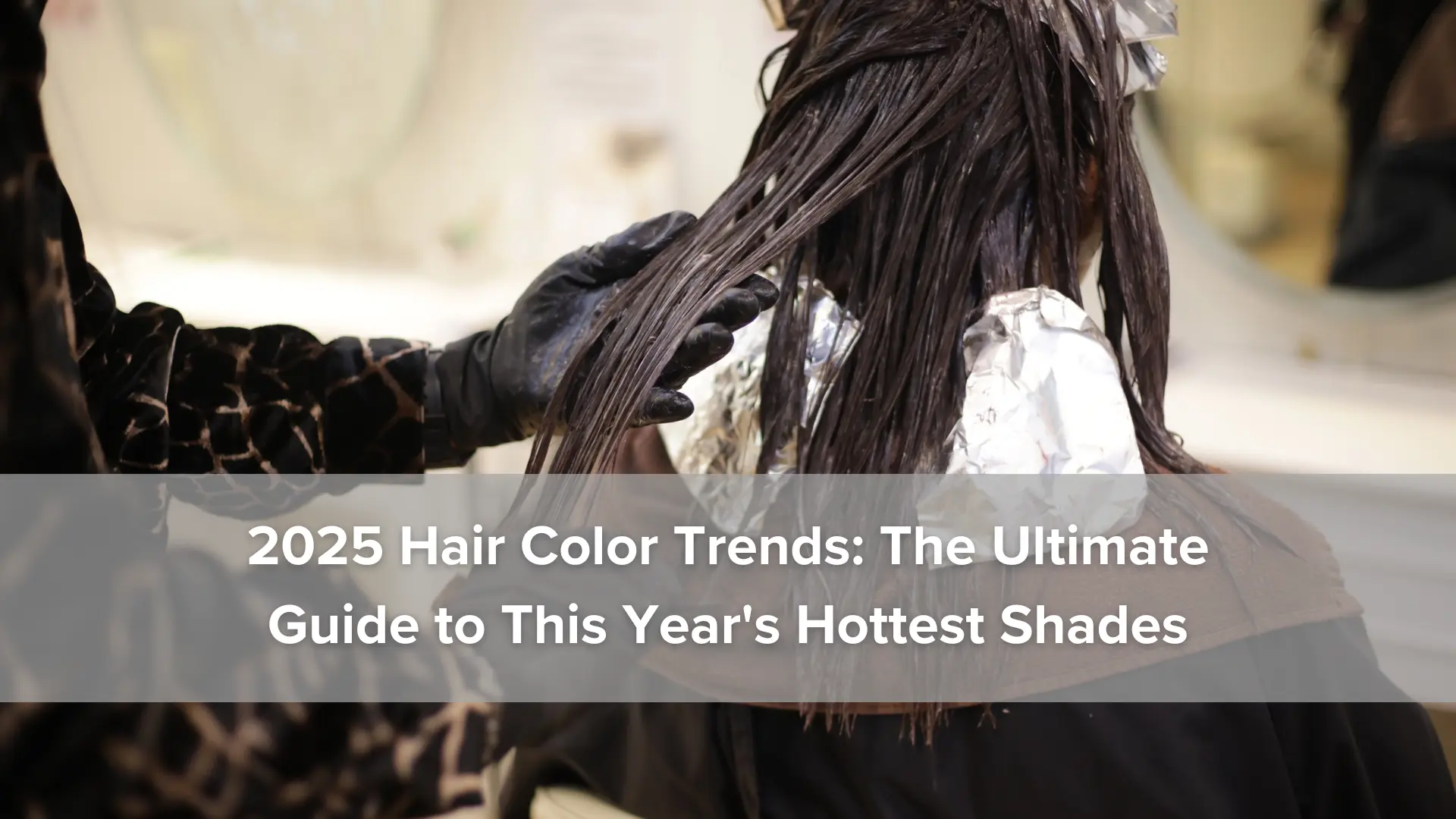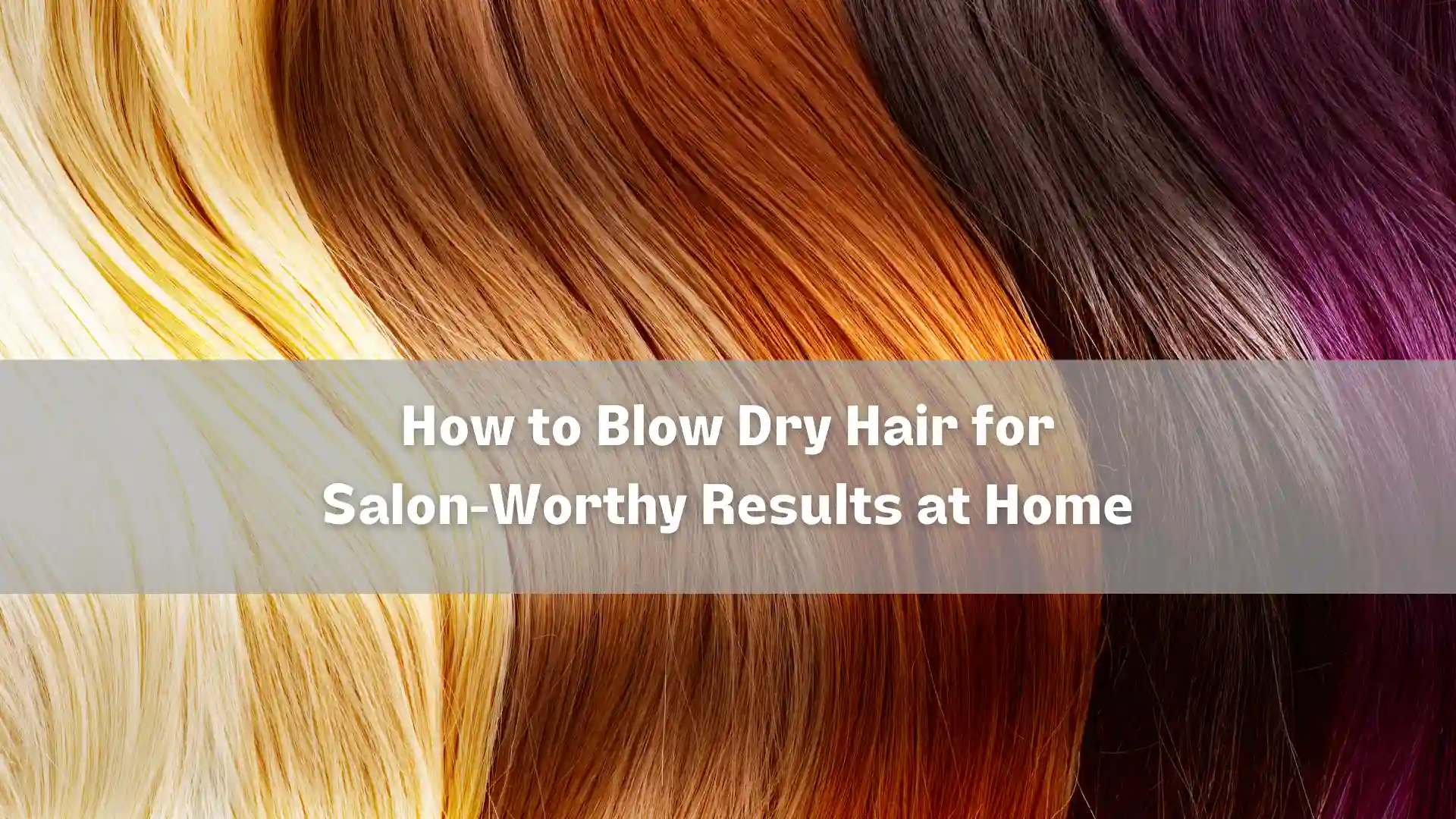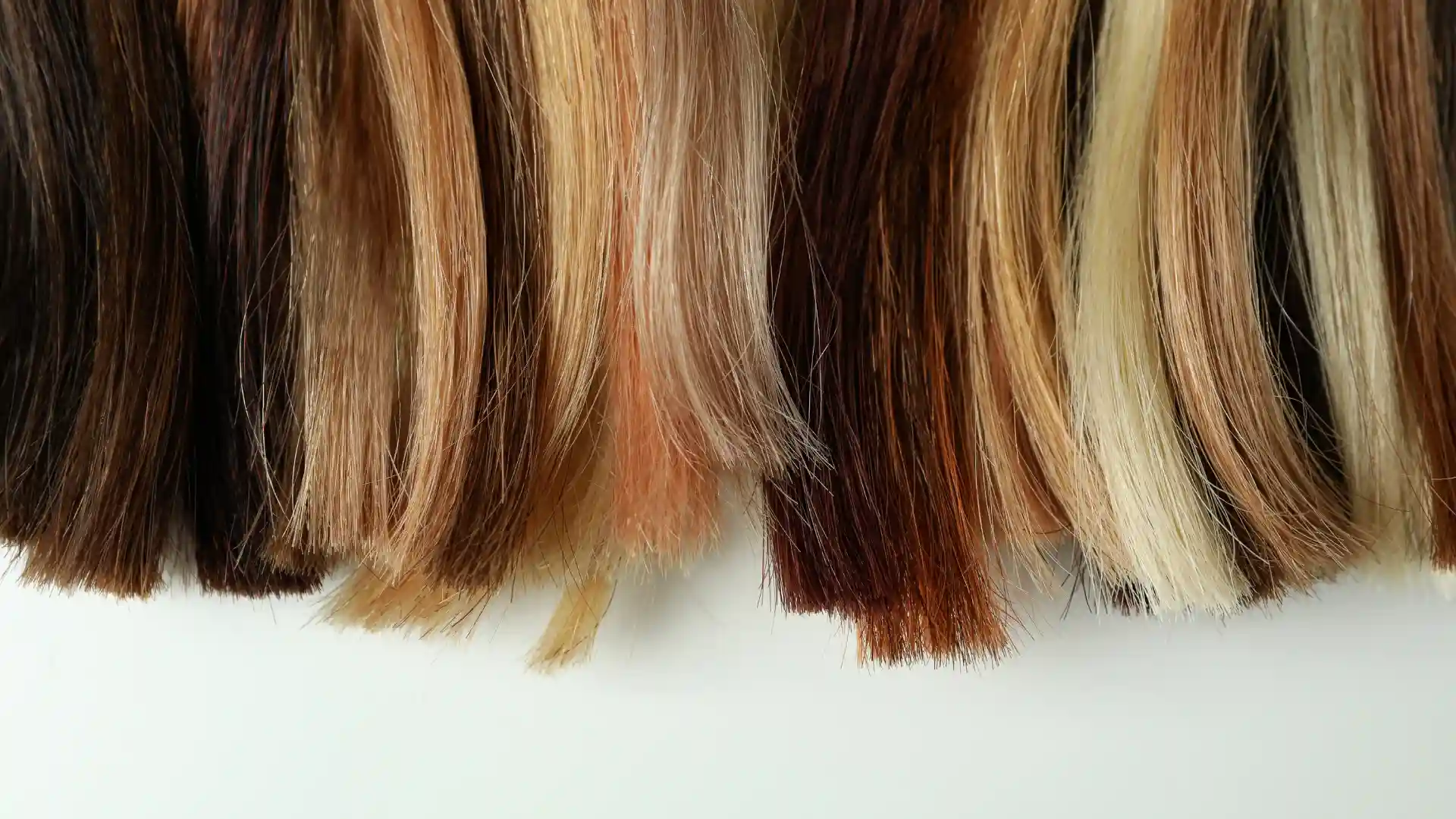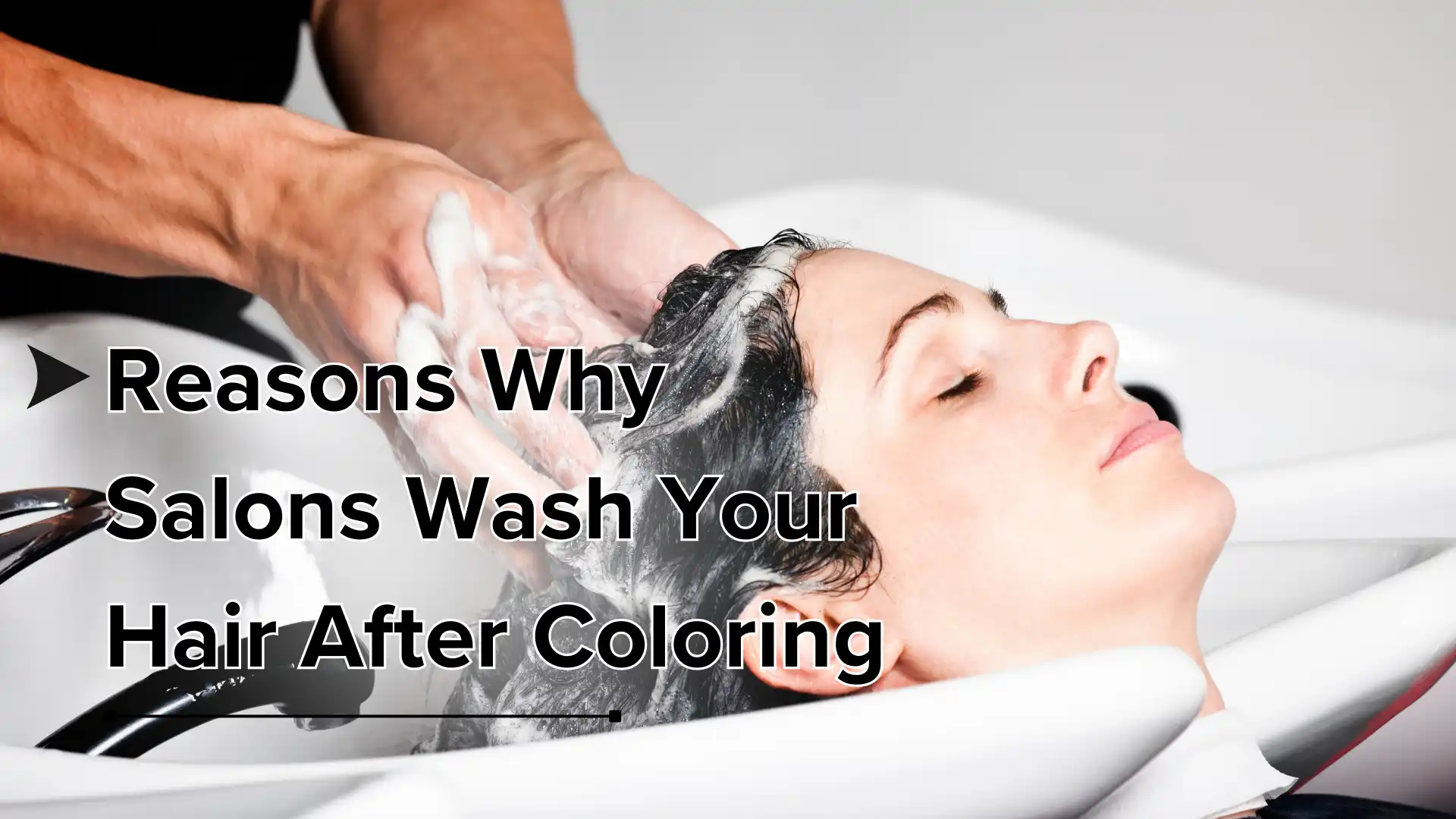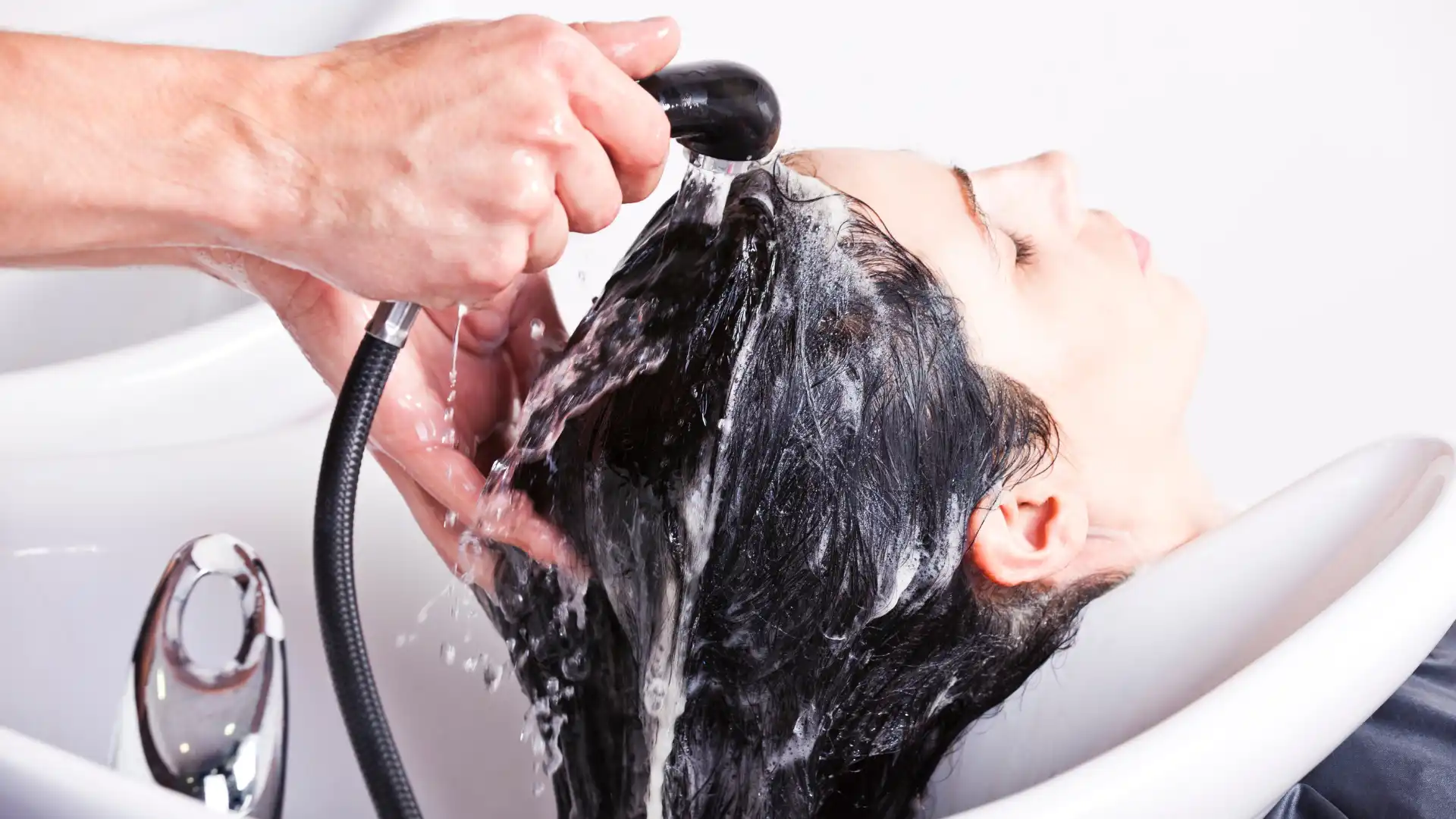What Are the Biggest Hair Color Trends for 2025?
The 2025 hair color trends are all about sophistication, dimension, and low-maintenance beauty. Gone are the days of one-dimensional, high-maintenance colors that demand constant upkeep. Instead, 2025 celebrates a shift toward nuanced, multi-tonal shades that work harmoniously with your natural complexion while requiring minimal salon visits.
This year’s trends are heavily influenced by PANTONE’s Color of the Year, Mocha Mousse, a rich, earthy brown that perfectly encapsulates the 2025 aesthetic. The overarching theme? Warm, dimensional, and effortlessly elegant. Whether you’re drawn to deep brunettes, buttery blondes, or bold statement colors, 2025 offers something for every personality and skin tone.
The biggest hair color trends for 2025 fall into several key categories: luxurious warm brunettes, lived-in blonde shades, dimensional balayage techniques, and bold jewel tones for the fashion-forward. Professional colorists are moving away from harsh lines and flat colors, instead embracing techniques that create depth, movement, and a naturally sun-kissed appearance. At [firm-name], our stylists stay current with these evolving trends to deliver the most sophisticated color transformations.
Molten Brunette: The Luxurious Deep Brown Taking Over
If there’s one color dominating salons across Houston and beyond, it’s molten brunette. This isn’t your average brown, it’s a deep, shimmering shade that evokes the heat of molten metal, creating a sumptuous glow that catches light beautifully.
Molten brunette marries chocolate, amber, and mocha tones to give the impression of light flowing between strands with a liquid, almost iridescent shine. What makes this trend so appealing is its versatility and low-maintenance nature. Unlike lighter colors that show regrowth quickly, molten brunette is forgiving and actually looks better as it grows out naturally. This is why shadow roots and blurred root techniques work so beautifully with this color.
This luxurious shade works on straight, wavy, or curly hair and is particularly flattering on those with golden or porcelain skin tones, hazel eyes, green eyes, or ice-blue eyes. Molten brunette’s multidimensional nature means it enhances your natural features without requiring frequent touch-ups, typically just every 6-8 weeks for optimal vibrancy.
How to Style Molten Brunette Hair
Molten brunette’s depth and shine make it incredibly versatile for styling. Wear it in a chic chignon for a polished, professional look, or let it flow long and loose with a middle part to showcase the dimensional shimmer. Sculptural updos, arpeggiated layers, and stick-straight styles all beautifully highlight the luxurious depth of this color. For styling tips and maintenance, consult with our professional stylists.
Mocha Mousse & Warm Brunette Shades
PANTONE’s Color of the Year for 2025 is Mocha Mousse, a rich, sophisticated, earthy brown taking the hair world by storm. This color represents the perfect balance between warmth and elegance, making it universally flattering across multiple skin tones.
Mocha Mousse isn’t alone in the brunette trend. Related shades gaining popularity include Dark Chocolate with Caramel highlights, Espresso Brown, and Cinnamon Spice. These warm brunette variations create a dimensional, expensive-looking finish that appears professionally crafted without the harsh maintenance of lighter colors.
Why are warm brunettes dominating 2025? They’re flattering on nearly every skin tone, require minimal maintenance, and naturally hide regrowth. When combined with balayage or subtle highlight techniques, warm brunettes create depth and movement that makes hair look thicker, shinier, and more luxurious.
Professional colorists are using advanced techniques, such as babylights and finer, more blended pieces, to create a naturally sun-kissed appearance within warm brunette bases. This dimensional approach gives the illusion of expensive, high-end color work while remaining low-maintenance. Understanding how long balayage lasts helps you plan your maintenance schedule accordingly.
Buttery Blonde & Golden Tones
The blonde trend of 2025 is all about lived-in, low-maintenance beauty. Buttery blonde represents a shift away from harsh platinum toward softer, warmer undertones that feel effortless and sophisticated.
This isn’t the bright, bold platinum of years past. Instead, buttery blonde embraces creamy, warm tones that blend seamlessly with your natural hair color. Related trends include Old Money Honey Blonde, Blended Honey, and Palomino Blonde, all celebrating warmth, depth, and a naturally sun-kissed aesthetic.
Buttery blonde works best on those with warm and neutral skin tones. The key to achieving this look is strategic placement through techniques like money-piece highlights, which frame the face with brighter pieces while keeping the base darker and more natural-looking. This creates dimension and draws attention to your features without the commitment of full-head lightening.
The beauty of buttery blonde in 2025 is its low-maintenance nature. With proper placement and the right technique, you can go 8-12 weeks between salon visits, making it perfect for busy Houston professionals who want luxury without the constant upkeep. Learn more about how often you should wash your hair to maintain your blonde color between appointments.
Bold & Vibrant: Cherry Cola, Copper & Red Tones
For those ready to make a statement, 2025 offers stunning red and copper options that are anything but subtle. Cherry Cola, a violet-infused red with blue undertones, is having a major moment, offering a sophisticated alternative to traditional reds.
Cowboy Copper brings warmth and vibrancy with its chestnut brown base infused with copper tones. Cinnamon Red and Auburn shades offer slightly more muted takes on the red trend, perfect for those who want color without maximum boldness.
These warm, vibrant tones flatter warm skin tones and olive complexions beautifully. They create an eye-catching, confident look that turns heads. However, it’s important to note that red shades require more maintenance than brunettes or blondes, typically touch-ups every 4-6 weeks to maintain vibrancy.
If you’re considering a red or copper shade, invest in color-safe shampoos and conditioners, limit heat styling, and avoid chlorine and saltwater, which can fade these vibrant hues quickly. The payoff? A bold, beautiful color that makes a powerful personal statement. Please schedule a consultation with our color specialists for professional guidance on maintaining red tones.
Dimensional Techniques: Balayage, Babylights & Soft Ombré
The technique matters just as much as the color in 2025. Dimensional coloring, using multiple tones and strategic placement, creates an expensive, high-end appearance that looks professionally crafted and naturally beautiful.
Balyage, a hand-painted highlighting technique, remains the gold standard for creating dimension. Unlike traditional foil highlights that can look stripy, balayage creates a soft, blended effect that mimics natural sun exposure. This technique works beautifully on brunettes, blondes, and everything in between. Discover what type of hair is best for balayage to determine if this technique suits your hair.
Babylights take balayage a step further, using even finer, more delicate pieces to create an ultra-blended, natural-looking result. This technique is perfect for those who want dimension without obvious highlights. Understanding the difference between highlights and lowlights is important when choosing your dimensional technique.
Soft shadow roots and blurred root techniques are also trending in 2025. Rather than fighting regrowth, these techniques embrace it, creating a low-contrast, naturally grown-out appearance that requires less frequent salon visits. This approach is perfect for busy professionals who want beautiful color without constant maintenance.
Jewel Tones & Statement Colors
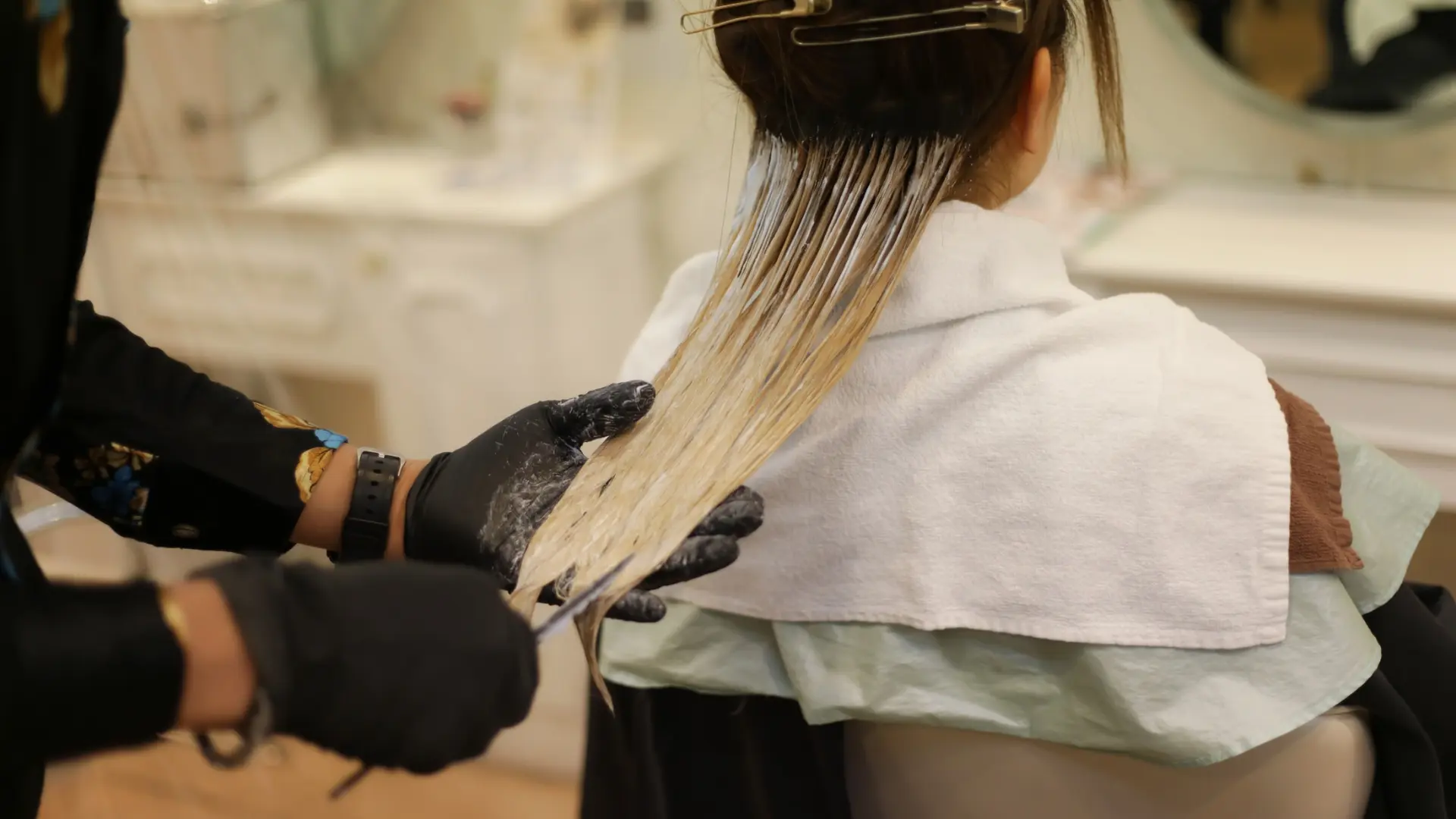
Jewel tones are perfect for those with confident personalities who aren’t afraid to stand out. These colors work best on darker hair bases, where they truly pop and create maximum impact. Some clients choose to incorporate jewel tones as partial colors, perhaps in a hidden layer or as an accent, while others go all-in with a complete jewel-tone transformation.
Maintenance for jewel tones varies depending on the specific shade and your hair type, but generally expect touch-ups every 6-8 weeks. Investing in color-depositing treatments and color-safe products is essential to keep these vibrant shades looking fresh and saturated. Learn about color-treated hair myths to avoid common maintenance mistakes.
Why Choose Therapy Hair Studio for Your 2025 Hair Color Transformation
When it comes to achieving the perfect 2025 hair color, expertise matters. At Therapy Hair Studio in Houston’s prestigious Galleria area, master stylists David Bamford and Luis Perez have been transforming hair since 2008, building a reputation as one of Houston’s premier salons for precision color work.
Therapy Hair Studio‘s expert colorists, including Kelsey Champion, Victoria Souder, and Lilli, bring years of specialized experience to every consultation. They understand that choosing a new hair color is a personal decision, and they take time to assess your skin tone, eye color, lifestyle, and maintenance preferences to recommend the perfect shade for you. Read our client testimonials to see the transformations we’ve achieved.
What sets Therapy Hair Studio apart isn’t just our expertise, it’s our commitment to the complete experience. From the moment you walk through our doors at 2727 Saint St., you’re treated to a premium salon atmosphere. Enjoy complimentary champagne, wine, tea, or a hot cappuccino while our stylists work their creative magic on your hair.
Our colorists don’t just apply color and send you on your way. They teach you maintenance techniques to keep your new shade looking fresh between appointments. Whether you’re investing in molten brunette, buttery blonde, or a bold jewel tone, we ensure you have the knowledge and products to maintain your color at home. Explore our hair care basics for expert guidance.
Beyond color services, Therapy Hair Studio offers comprehensive hair solutions including precision haircuts, Brazilian Blowout treatments, hair extensions, and bridal hair and makeup services. Many clients return to us for years because they know they’ll receive nothing less than perfection every single time.
Client Testimonials Speak for Themselves:
“Victoria has been my colorist for four years, and I cannot describe how marvelous I feel and spectacular I look when I exit their salon.” — Margaret S.
“I’ve been going to Lilli for color and Sulli for haircuts for about 12 years. I’m as high maintenance as it gets, and I have never had anything less than perfection every single time.” — Debbie P.
“Casey did an AMAZING job cutting my hair! I have received so many compliments. This place is worth the quality experience.” — Rachel M.
Ready to transform your hair with one of 2025’s hottest trends? Call Therapy Hair Studio at (713) 355-4247 to schedule your consultation today.
FAQs
Q: What hair color trend is best for my skin tone?
A: The best color for you depends on your undertones. If you have warm undertones, caramel, chestnut, honey brown, and copper shades will be most flattering. Cool undertones look best with ash brown, espresso, and smoky brunette. Neutral undertones can pull off rich chestnut or dark cherry brown beautifully. The best approach is to schedule a consultation with a professional colorist who can assess your specific complexion and recommend personalized options. Learn more about hair color ideas that complement your skin tone.
Q: How do I maintain trendy hair colors in 2025?
A: Most 2025 trends are designed to be low-maintenance, but proper care extends their vibrancy. Use color-safe shampoos and conditioners, limit heat styling, and avoid chlorine and saltwater when possible. For red shades, touch-ups every 4-6 weeks maintain vibrancy. For brunettes and blondes, 6-8 weeks between appointments is typical. Professional treatments like color-depositing masks and Olaplex treatments help maintain shine and health.
Q: Are 2025 hair color trends low-maintenance?
A: Yes! Most 2025 trends focus on low-maintenance beauty with high-end techniques. Balayage and shadow roots grow out naturally without obvious regrowth lines. Mocha and brunette shades require fewer touch-ups than blonde. Dimensional color hides regrowth better than flat, single-tone colors. This makes 2025 trends perfect for busy professionals. Discover why do salons wash your hair after coloring to understand proper color care.
Q: Can I achieve 2025 trends on dark hair?
A: Absolutely! Brunette and copper trends work beautifully on dark hair. Balayage adds dimension without requiring a full color change. Jewel tones pop dramatically on dark bases. If you’re drawn to lighter shades like buttery blonde, start by consulting a professional colorist. They’ll create a personalized plan to gradually lighten your hair while preserving its health and strength. Learn about the 4 reasons a professional needs to color your hair.
Q: How often should I get my hair colored?
A: Frequency depends on your specific color and technique. Balayage and highlights typically need refreshing every 8-12 weeks. Root touch-ups for solid colors are usually needed every 4-6 weeks. Mocha and brunette shades can often go 6-8 weeks between appointments. A professional colorist can recommend the ideal schedule based on your chosen color and hair type. Understand how often you should use purple shampoo as a blonde for maintenance between appointments.
Ready to embrace a 2025 hair color trend? Contact Therapy Hair Studio today at (713) 355-4247 or visit us at 2727 Saint St., Houston, TX 77027. Let our expert colorists help you find the perfect shade for your unique beauty.





